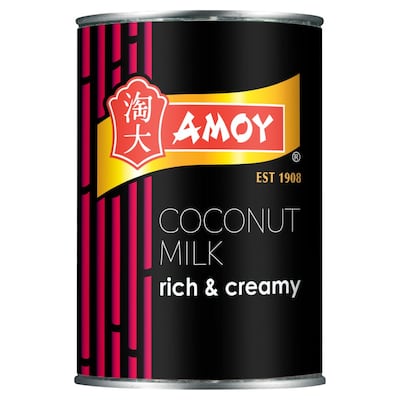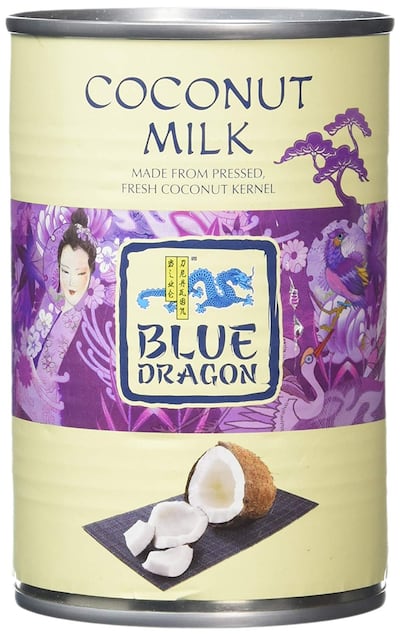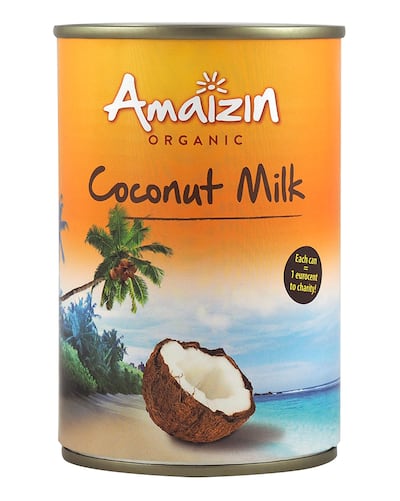Why we ever had a coconut in the house for Halloween, I’m not sure. But we did. It was the 1970s and exotic fare rarely made it as far as the kitchens of farmhouses in Co Meath – unless there was a very special occasion.
Of course coconuts aren’t even nuts, but it was still a hard one to crack. With no machete handy, cracking open the hairy brown shell proved challenging. The biggest shock came when it finally split to reveal not the anticipated sweet coconut milk but a clear liquid. That’s because coconut milk is made by grinding up the white flesh lining the fruit, soaking it in water and then straining it.
These days, coconut milk is easy to find in cans or cartons in supermarkets and health food shops. Tinned coconut milk is a good store-cupboard ingredient given how long it can be kept. One tin bought recently had a stamp reading: BBE 01/2020. This means that you should consume it before January 2020 to get the best result. Even after that, however, it should still be fine to use.

There are quite a few brands on sale and the product differs mostly in the percentage of coconut used to make the milk and the additives used. For years, I always reached for the Amoy brand, because I was familiar with the name from my time living in south-east Asia.
But that may change now that I have examined a lot of tins on sale. As the label explains, Amoy’s coconut milk is made in Thailand, which is to be expected given that coconuts grow in tropical climates. Amoy used to be a Chinese brand, but it is now owned by Ajinomoto, the Japanese group which is best known for bringing us monosodium glutamate, the flavour enhancer.
The ingredients list on a 400ml tin of Amoy’s Rich and Creamy coconut milk reads: coconut extract (55 per cent), water, thickener – carboxy methyl cellulose, emulsifier – polysorbate 60. So there’s plenty of coconut. Carboxy methyl cellulose, which is the thickener used, can be derived from cotton or wood pulp. It facilitates hydration and helps to control moisture levels. Polysorbate 60 helps the oil and water to combine. Opt for the reduced fat version of the milk and you will quickly see that it simply has more water and less coconut.
The list reads: water, coconut extract (30 per cent), thickener – carboxy methyl cellulose, emulsifier – polysorbate 60. The two tins generally cost the same, so if you buy the reduced fat version, you are paying extra to buy a product filled out with water. It might be better to simply add water yourself to the full-fat version.

Thailand
Blue Dragon coconut milk is made by AB World Foods, which is owned by Associated British Foods, the giant that enjoys sales of about £15 billion worldwide. Its coconut milk comes from Thailand or the Philippines and has almost identical ingredients, though it does not seem so at first glance.
It contains: coconut extract (56 per cent), water, stabiliser (E466), emulsifier (E435), antioxidant (citric acid). E466 is another name for carboxy methyl cellulose. E435 is another name for polysorbate 60. The real surprise is that Blue Dragon did not try to leave the E numbers off the tin.
Aldi’s Asia brand coconut milk is also from Thailand, but costs about half the price. For that, you get even more coconut. It has: coconut extract (68 per cent), water, stabilisers (guar gum), carboxy methyl cellulose, and sucrose esters of fatty acids as an emulsifier. Guar gum is often used as a thickener as well as a stabiliser, but can act as a laxative if too much is taken.
Sucrose esters help to make the oil in the product easier to work with and also less likely to look grey in the end. So it’s also highly processed, but cheaper.

There are simpler products out there, however. Amaizin Coconut Milk, for example, lists its ingredients as simply: coconut, water and guar gum. The coconuts are harvested in Sri Lanka where the Dutch company says it runs a project to help educate girls for the food industry.
Other brands contain simply coconut and water.
That’s what I’ll be using next time.
FOOD LABELS SERIES
1) Being a successful shopper
2) Bread
3) Milk
4) Cereal
5) Rashers
6) Yoghurt
7) Soup
8) Hummus
9) Pasta sauce
10) Chinese ready meals
11) Frozen chips
12) Chilled fish
13) Egg
14) Chicken Kiev
15) Crisps
16) Mayonnaise
17) Baked beans
18) Tomato ketchup
19) Chocolate digestive biscuits
20) Avocados
21) Cadbury's Dairy Milk
22) Dark chocolate










